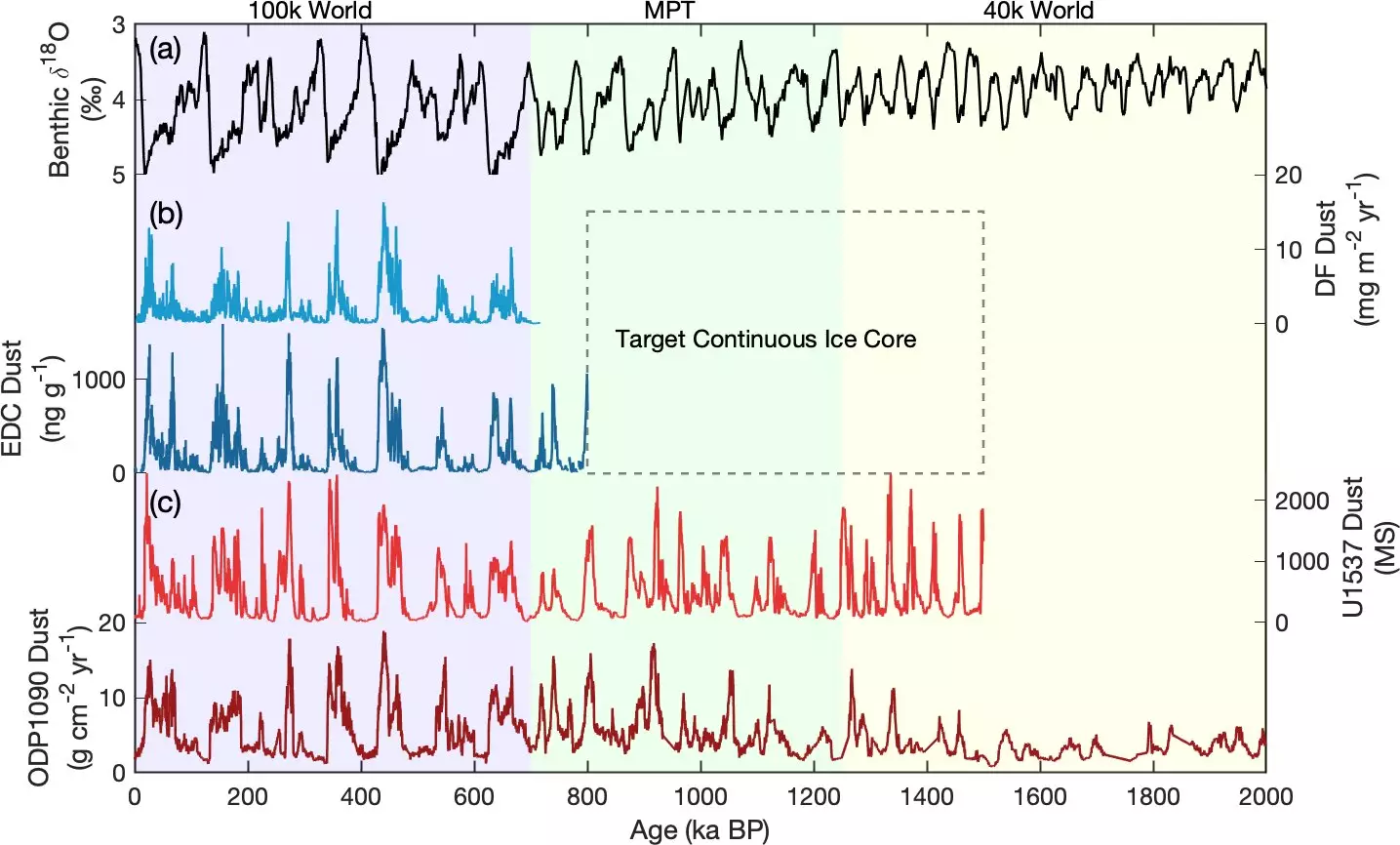Throughout its extensive geological history, Earth has undergone significant climatic transformations, including several glacial epochs where ice extensively covered large areas. These occurrences are not merely historical curiosities; they hold vital clues about Earth’s climate systems. A key to deciphering these ancient shifts lies in the analysis of ice cores, which serve as frozen time capsules containing remnants of past climates, including trapped gases, dust, and other geochemical markers. Through rigorous scientific inquiry, researchers can interpret these cores to identify global climate patterns, aiding our understanding of ongoing climate change.
The Vital Role of Dust in Ice Analysis
One crucial aspect of ice core analysis is the concentration of dust, which can provide valuable insights into climatic conditions. Elevated levels of dust in ice cores often correlate with periods of glaciation. During such times, the exposure of continental shelves, coupled with diminished rainfall and increased aridity, facilitates enhanced dust transport due to stronger winds. Consequently, the composition of trapped dust can indicate historical weather patterns and geographic influences.
The oldest continuous record of ice from Antarctica, collected through the European Project for Ice Coring in Antarctica at Dome C, extends back approximately 800,000 years. Yet, an international consortium of scientists aspires to extend this chronology to 1.5 million years, thereby obtaining a more comprehensive view of Earth’s climatic oscillations.
By examining the ice core data, scientists can discern the cyclical nature of Earth’s climate, fluctuating between glacial and interglacial phases. For instance, prior to 1.2 million years ago, climate shifts were driven predominantly by cycles spanning about 41,000 years. A period known as the mid-Pleistocene transition produced irregular cycles lasting between 700,000 years and 1.2 million years ago. Since then, the climate has displayed a more regularity with cycles approximately every 100,000 years.
Undertaking this extensive research is not without its challenges. Changes in land topography due to glacier movement, along with basal melting, can disrupt the stratification of ice, complicating reconstruction efforts. Finding optimal drilling locations is essential, necessitating thorough reconnaissance missions to ensure that scientists can recover meaningful ice core samples.
Once potential drilling sites are identified, rapid recovery of the cores becomes a priority. This often involves strategic melting of upper layers of ice to access older, deeper ice more efficiently. Techniques such as optical logging, which employs laser technology to assess dust concentrations within the ice, have been employed to determine the viability of these core samples. Particularly noteworthy is a recent study published in the journal *Climate of the Past,* which posits that Site U1537 in the southern Atlantic Ocean could be a crucial candidate for identifying ancient marine dust—a key element for understanding the age of the ice.
Researchers, including Dr. Jessica Ng from the Scripps Institution of Oceanography, have undertaken the challenging task of comparing dust content from various ice cores to establish correlations between marine dust samples and ice records. By utilizing artificial samples to match with existing marine dust records, the researchers hope to clarify the relationships between various geographic regions and their contributions to older ice formations.
A significant aspect of their research focuses on unveiling the causes and implications of the mid-Pleistocene transition—a pivotal period in Earth’s climatic history. Past studies have suggested that factors such as tectonic activity might have contributed to the thinning of regolith, which can support thicker ice sheets and induce cooling. However, the researchers acknowledge that more studies are necessary to elucidate the mechanisms at play.
The findings from such investigations are more than academic; they bear consequences for our understanding of current climate trends. Recognizing long-term climate cycles and their feedback mechanisms is critical, not only for historical context but also for anticipating potential future shifts in the global climate system.
The Urgency of Continued Research
The significance of ice core research extends well beyond the realm of historical knowledge—it presents an essential avenue for comprehending the dynamics of our planet’s climate systems. With the potential to identify patterns spanning tens of thousands of years, this research bolsters our understanding of climate variability. As we face the reality of climate change today, efforts to better understand our planet’s past through ice cores are not just scientific endeavors; they are imperative for formulating effective responses to the climate challenges of tomorrow.


Leave a Reply